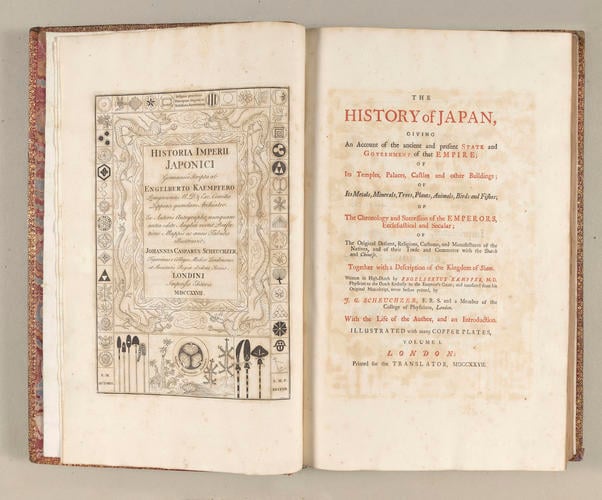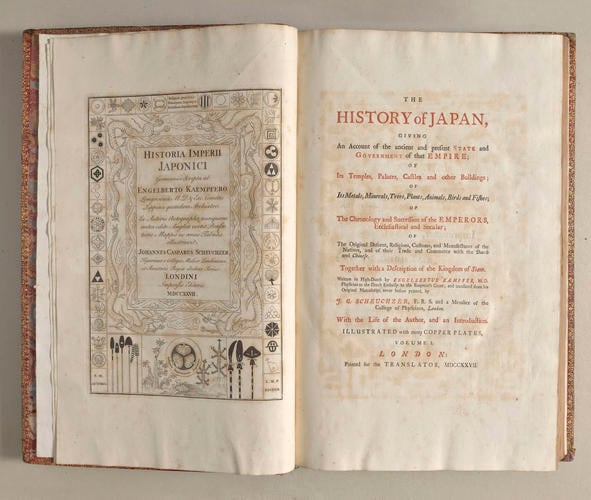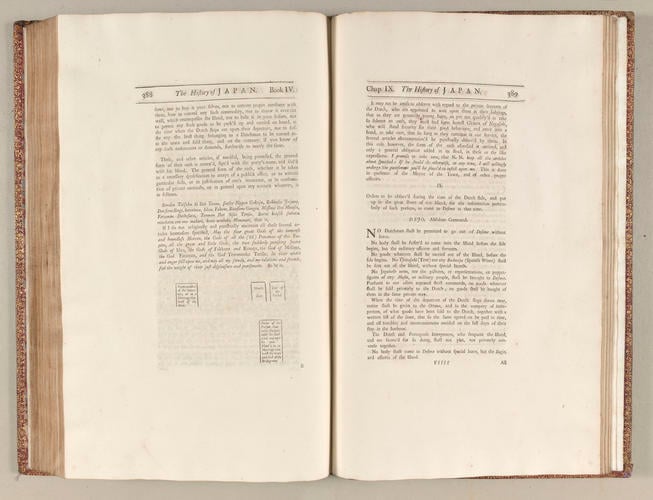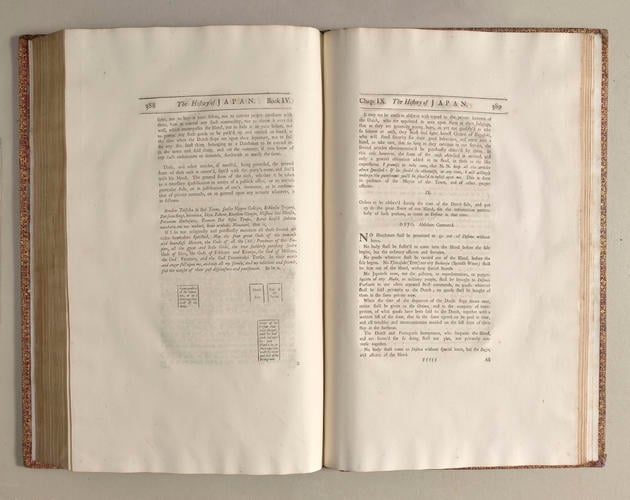-
1 of 253523 objects
The History of Japan, giving an account of the ancient and present state and government of that empire, of its temples, palaces, castles and other buildings ... : together with a description of the Kingdom of Siam ; v. 1 / E. Kaempfer. 1727
Leather-bound in red goatskin with gold tooling | 46.7 x 29.2 x 5.1 cm (book measurement (conservation)) | RCIN 1074485

Engelbert Kaempfer (1651-1716)
The History of Japan, giving an account of the ancient and present state and government of that empire, of its temples, palaces, castles and other buildings . . . : together with a description of the 1727

Engelbert Kaempfer (1651-1716)
The History of Japan, giving an account of the ancient and present state and government of that empire, of its temples, palaces, castles and other buildings . . . : together with a description of the 1727

Engelbert Kaempfer (1651-1716)
The History of Japan, giving an account of the ancient and present state and government of that empire, of its temples, palaces, castles and other buildings . . . : together with a description of the 1727

Engelbert Kaempfer (1651-1716)
The History of Japan, giving an account of the ancient and present state and government of that empire, of its temples, palaces, castles and other buildings . . . : together with a description of the 1727




-
The isolationist policy of Edo-period Japan—鎖國, sakoku or ‘closed country’, enforced from the 1630s to the early 1850s—placed significant restrictions on trade and foreign relations. First-hand information about the country was largely available to Europeans only via merchants of the Dutch East India Company stationed at the ‘Japan factory’ at Deshima, whose accounts evoked romantic images of an isolated country with mysterious customs.
Engelbert Kaempfer served as a surgeon at Deshima from 1690 to 1692. He gathered extensive notes on the history, culture, and natural history of Japan, primarily during his two excursions to the capital, Edo. Returning to Europe in 1695, he published a survey of Japanese botany, Amoenitatum exoticarum (1712), but died before he could publish his history of the country itself. Fortunately, Kaempfer’s manuscript notes survived and were purchased by the botanist and collector Sir Hans Sloane (1660–1753) who charged his librarian, Gaspar Scheuchzer with producing an English translation. The resulting two-volume publication, dedicated to George II, was the most comprehensive European account of Japan for over a century and the first such work in English.
Kaempfer’s History of Japan also contained plates taken from authentic Japanese woodblock prints, including the first contemporary depiction of Edo to appear in European literature. The book’s influence was wide-ranging, and it remained an important account of Japan and Japanese life until well into the nineteenth century. The term sakoku in fact owes its existence to the History. It was coined by the Nagasaki translator Shizuki Tadao in his 1801 Japanese-language edition of the work; the policy was previously termed kaikin or ‘maritime restrictions’.
Provenance
Possibly acquired by Queen Caroline. Probably the copy listed in the inventory of George III’s library at Richmond Lodge, prior to its dispersal c. 1766. In the library of George III at Windsor by 1780.
-
Creator(s)
(translator)Acquirer(s)
-
Medium and techniques
Leather-bound in red goatskin with gold tooling
Measurements
46.7 x 29.2 x 5.1 cm (book measurement (conservation))
Category
Other number(s)
ESTC : English Short Title Catalogue Citation Number – ESTC T123495